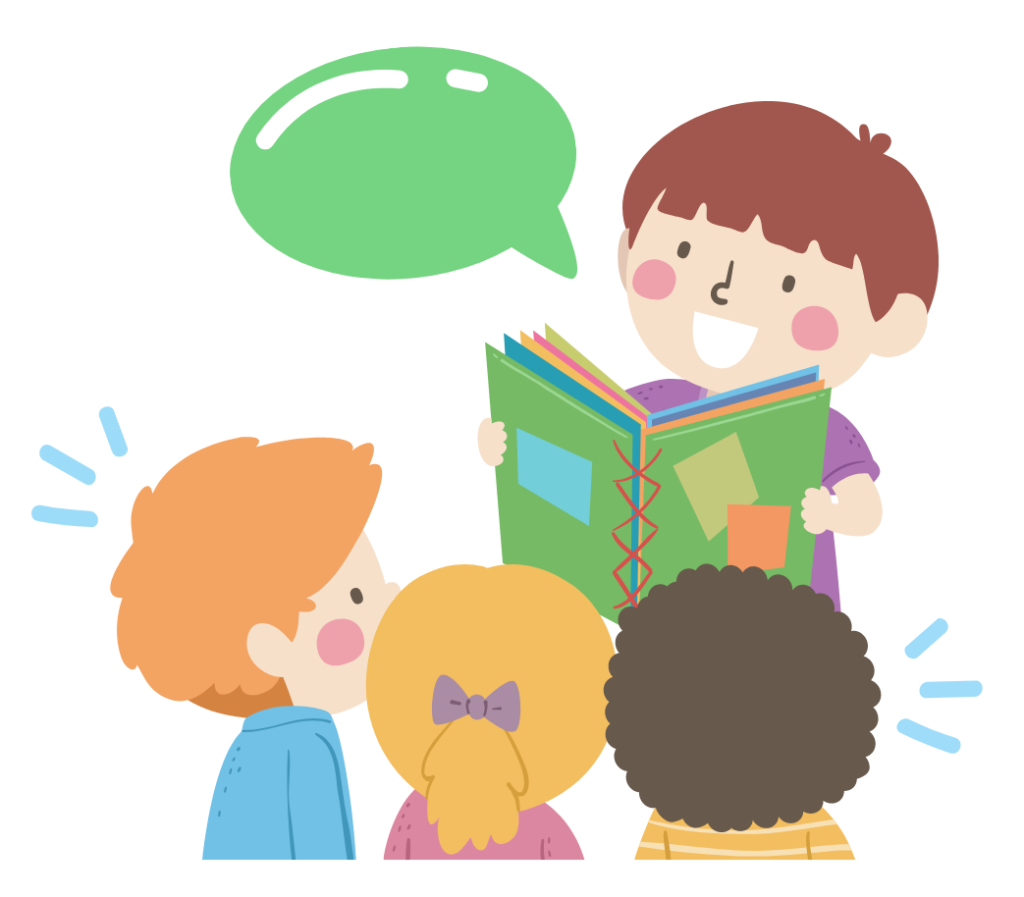Written by Georgian College CDA student, Alexandria, and edited by Grandview Kids Speech-Language Pathologist, Teresa
What is fluency?
When looking at the concept of fluency from a speech and language perspective, we are referring to the continuity, smoothness, rate and effort of our speech and sound production. Every single person has experiences with disfluencies (breaks or disruptions in speech), whether it be using filler words such as “um” or “like,” briefly hesitating mid-sentence, or having to repeat a few words or phrases — these are all completely normal and expected to occur every once and a while. However, there are instances when disfluencies are occurring at an atypical rate, causing substantial interruptions in the flow of the language being produced by the speaker. This is known as a fluency disorder.
Stuttering
The most commonly known fluency disorder is stuttering. Stuttering is characterized by a specific set of disfluencies that co-occur with excess tension in the voice and/or face. You can tell there is tension because the sounds or words sound sticky or stuck.

Types of stuttering include:
- Word repetitions (e.g., “I can do-do-do it.”; “Baby-Baby-Baby-Baby needs a bath.”)
- Part-word or syllable repetitions (e.g., “Mo-Mo-Mo-Mommy I see a dog”; “Ca-Ca-Ca-Can you help me?”)
- Sound repetitions (e.g.,“C-C-C-Can you help me?”; “T-T-Today is my birthday.”)
- Prolonged sounds (e.g., “Ssssssssssarah is here today.”; “Caaaan I have juice?”)
- Blocks: no airflow or voice for a moment or longer (e.g., “Can I have _____ juice?”)
About 5% of all children go through a stage of stuttering between the ages of 2 and 5. On average, 75% of those who do are eventually able to grow out of the stuttering on their own, taking anywhere between 6-24 months to disappear. You may be wondering, why is it that so many children go through this? Well, according to doctors and scientists, there is no definitive answer or cause as to why certain people develop a stutter, though a handful of factors may be directly linked. These factors include gender, family history and genetics, as well as minor differences in how the brain processes information during speech. Whether it be a stutter that a child outgrows or one that persists to the point of professional intervention, there is generally no sole cause.
Unfortunately, the negative impacts of stuttering are not limited to just the production and fluency of speech, but also the person’s, who is stuttering, mental well-being. There is an increased level of tension and anxiety associated with stuttering, especially in certain situations where verbal communication is unavoidable, such as talking on the phone, or during social outings, which can increase the severity and frequency of the stuttering. This can have an emotional impact on both children and parents. The child may become shy and self-conscious about the way they speak, causing resistance and avoidance to talk, while parents might become worried for their children and fear that the stuttering will persist into adulthood. Thankfully, there are treatment options and intervention methods available to families regarding fluency disorders, including assistance from a Speech and Language Pathologist (SLP). If you feel that your child is developing, or having difficulties with a fluency disorder, do not hesitate to seek help from a professional as early as possible.
In addition to professional intervention strategies that you will be given while working with an SLP, it is important to take the time as a parent to understand and accept that your child is stuttering and that everything will be okay. Communication barriers can often lead to agitation and stress for both parties involved, so make sure to remain patient with your child (and yourself), reassure them that you are listening to them and ultimately give them the time they need to communicate things with you. Please refer below for additional strategies.

Fluency Enhancing Strategies
1. Listen patiently
- Listen patiently and positively when your child is talking; give them lots of time to finish.
- Avoid jumping in to fill in words or to give advice like “slow down”, “stop and think”, or “start again.”
- Never mimic, correct or punish stuttering.
2. Slow down the pace of talking
- Keep your speech slow and relaxed; take time to pause between ideas.
- Try to talk as if someone was trying to write down what you were saying.
3. Pause before beginning to talk
- Wait for a second or so before responding to your child to help calm the pace of conversations and to let them know they don’t need to rush to begin their speech.
- Pausing reduces the chance of accidentally interrupting your child.
4. Model language that is appropriate for the child’s level
- Spend some time modelling language that isn’t too long or complex for your child to say easily; practice saying one idea at a time and pause between ideas.
5. Avoid high-pressure questioning
- Avoid asking too many questions or asking a second question before the first is answered.
- Ask questions that help your child to communicate (e.g. “Who did you play with today?”, rather than those that test your child’s knowledge or memory, e.g. “What did you do at school?” or “Tell grandma what you’re learning at school”).
- Use comments instead of questions sometimes and WAIT for your child to be ready to talk.
6. Reduce corrections
- Avoid correcting your child’s speech sounds or grammar for now; your child will learn from hearing your correct model in natural conversations.
- Respond positively to your child’s talking and ideas as they are; avoid constant “teaching”.
7. Support good turn-taking habits
- Help all members of the family to take turns talking and listening; only one person should speak at a time and everyone should get a turn to talk; no one should “hog the stage”.
8. Make time for talking
- Make time each day for talking with your child that is unhurried and undistracted; this is the best way to learn which strategies are most helpful; 5 minutes a day can make a big difference.
Fluency Enhancing Strategies provided by the Speech and Stuttering Institute, Fluency 201 Training, October 2015.
Check out more Grandview Kids articles
- Team Grandview achieves Accreditation with Exemplary Standing, receiving a perfect score
- “Grandview Kids became my life raft” – International Day for People with Disabilities
- December: Dates of Significance
- From the search for support to finding a village: Celebrating Giving Tuesday
- Scarlett sparkles with hope in every step: Grandview Kids 2025 Holiday Campaign
